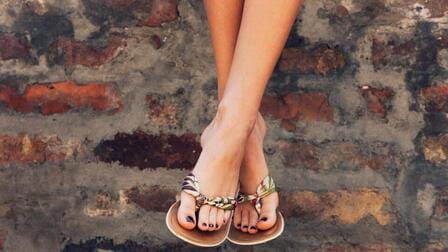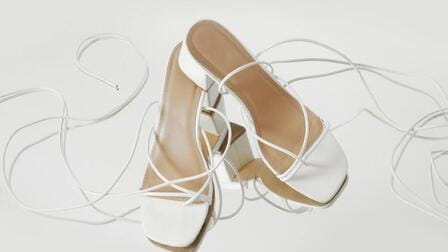Going to the beach is always an exciting time filled with sun, sand, and surf. However, having the right footwear is essential to maximize enjoyment while staying comfortable and safe. When it comes to beach footwear, sandals are a popular choice for good reason. But with so many styles of sandals available, it can be tricky to determine what kind works best for a day at the seaside.
Here is an in-depth look at some of the top options for beach sandals and what makes them suitable for different preferences and activities.
Factors to Consider When Choosing Beach Sandals
When selecting beach sandals, there are a few key factors to take into account:
Comfort
Comfort should be a top priority. Beaches often involve a lot of walking on hot, sandy surfaces which can quickly become irritating and tiring on bare feet. Look for sandals with good arch support, cushioned footbeds, and adjustable straps to customize the fit. Materials like leather or soft woven fabrics often feel best against the skin when wet compared to plastic or rubber.
Traction
Traction is important for maintaining stability on loose, shifting sands and slick wet surfaces. Sandals with textured rubber or EVA soles grip best on sand. Some styles also have toe guards to help “dig in” while climbing sandy dunes. Avoid smooth plastic or leather soles which can easily slip.
Water Friendliness
You'll want sandals that can get wet and rinse off easily. Leather and suede materials should be avoided as they take a long time to dry and can become damaged. Instead, look for sandals made of rubber, neoprene, nylon webbing, polyester, mesh or other synthetic quick-drying materials. Making sure straps are adjustable is also useful to accommodate wet and swelling feet.
Protection
Beach terrain can be rough on feet, so protection is essential. A sturdy sole helps shield from hot sand and sharp objects like rocks or seashells. Straps across the toes, ankles and heels keep the foot securely in place. Some athletic sandal styles even offer toe bumpers for extra defense. Closed toe options provide maximum coverage for little kids' sensitive feet.
Popular Beach Sandal Types
Taking these factors into account, below are some of the most common sandal styles people choose to wear to the beach and what makes them suitable:
Flip Flops
Flip flops are basic flat sandals with a Y-shaped thong strap between the toes. They are an iconic summer shoe thanks to their no-frills simplicity. The lightweight design dries fast after getting wet and the thin flexible sole conforms easily to the foot for casual comfort. However, flip flops lack arch support and easily slip off, making them a poor choice for walking long distances or water activities. They also provide minimal protection. Best for quick trips to the shoreline or poolside wear.
Sport Sandals
Active sport sandals are designed with athletic performance in mind. They have features like sturdy rubber outsoles for traction, arch support, and adjustable straps around the heel and forefoot for a stable and customized fit. Many sport sandal styles are waterproof or water-resistant with ventilation holes to let water drain out. The toe bumper offers extra protection when hiking on natural trails. While sport sandals can feel bulky compared to minimalist styles, they allow active movement in comfort and safety. Great for beach volleyball, swimming, climbing over rocks, and long walks on the sand.
Water Sandals
As the name implies, water sandals are constructed specifically to be worn while wading, swimming, or boating. They are usually made of lightweight mesh or synthetic webbing that dries quickly and resists absorbing water. The sole has deep siping or drainage holes so water flows through easily. An adjustable heel strap keeps the sandal securely on and toe guards provide reinforced protection. While they may lack style, water sandals offer maximum wet/dry traction and foot coverage in the surf.
Slide Sandals
Slide sandals like Birkenstocks feature wide straps across the toes and an open back. The contoured footbed has arch support and moderate heel cupping for comfort while walking. The layers of the sole are designed to absorb shock and conform to the foot over time. Slides stay on securely thanks to grippy rubber outsoles and toe strap, but the open heel allows air circulation. The suede or leather materials take longer to dry out though. Great for strolling the beach boardwalk and sightseeing around town before and after a beach visit.
Thong Sandals
For those who prefer minimal coverage, thong sandals have a simple V-shaped strap that sits between the toes. Many have a flat sole while some include a slight heel or platform. The lightweight feel provides comfort with movement. But the lack of straps means they offer less stability for active wear and are prone to slipping off. The exposed top of the foot is also more vulnerable to sunburns. Best for laidback lounging and showing off pedicures.
Key Recommendations
All said, here are my top picks for sandals to wear on a beach outing:
- For adults, sport sandals like Chacos or Tevas provide the best all-around foot protection, traction, and support for extensive walking while allowing feet to get wet.
- For kids, sandals with multiple adjustable straps like Keens are ideal to accommodate growing feet while also guarding tender toes from stubbing hazards.
- For casual beachcombing and relaxing at the shoreline, flip flops are convenient, affordable, and easy to slip on and off.
- For extensive wading and swimming in the waves, water sandals such as Speedos offer maximum wet traction and quick drying performance.
No matter your preference, be sure to choose sandals with adequate comfort, support, protection and water-readiness to match the activities planned for a day of sun and surf. Happy beachgoing!
Frequently Asked Questions
How can I keep my feet from getting sore while walking on the beach?
Look for sandals with good arch support, cushioning and adjustable straps to minimize rubbing and discomfort when walking long distances on sand. Waterproof sport sandals work well. Bring backup shoes too in case feet start to hurt.
What sandals provide the best traction on sand and in water?
Shoes with textured rubber or EVA soles grip best on wet sand. For water, sandals with drainage ports and deep siping help water flow through while maintaining surface contact for traction. Water sandals are designed specifically with wet conditions in mind.
Should I wear flip flops to the beach?
Flip flops are fine for light beach duties like going in the water or strolling short distances. But they lack stability for playing sports or offer protection for extended walking. Sturdier sandal styles work better for active beach days. Bring flip flops as a backup pair.
Can I wear leather sandals in the water?
You can, but leather takes a long time to dry and can become damaged and misshapen from getting wet. It's best to opt for sandals made with synthetic, quick-drying materials when planning to get them immersed.
How can I keep sand from getting in my sandals?
Make sure to choose sandals with an enclosed toe to help keep sand out. Shake them upside down frequently while walking to let sand fall out. You can also spray shoe waterproofer on the straps which helps repel sand particles so they don't stick as much.
Conclusion
When it comes to footwear for the beach, sandals are a versatile choice with options suitable for all sorts of seaside activities. Focus on comfort, water-resistance, traction and foot protection based on how much walking, swimming or water sports you plan to do. Sport sandals provide all-around performance for active beach days while flip flops are great for casual lounging. Avoid smooth soles that can slip on wet sand or in water. With the right beach sandals, you can maximize your enjoyment of surf and sun worry-free.












